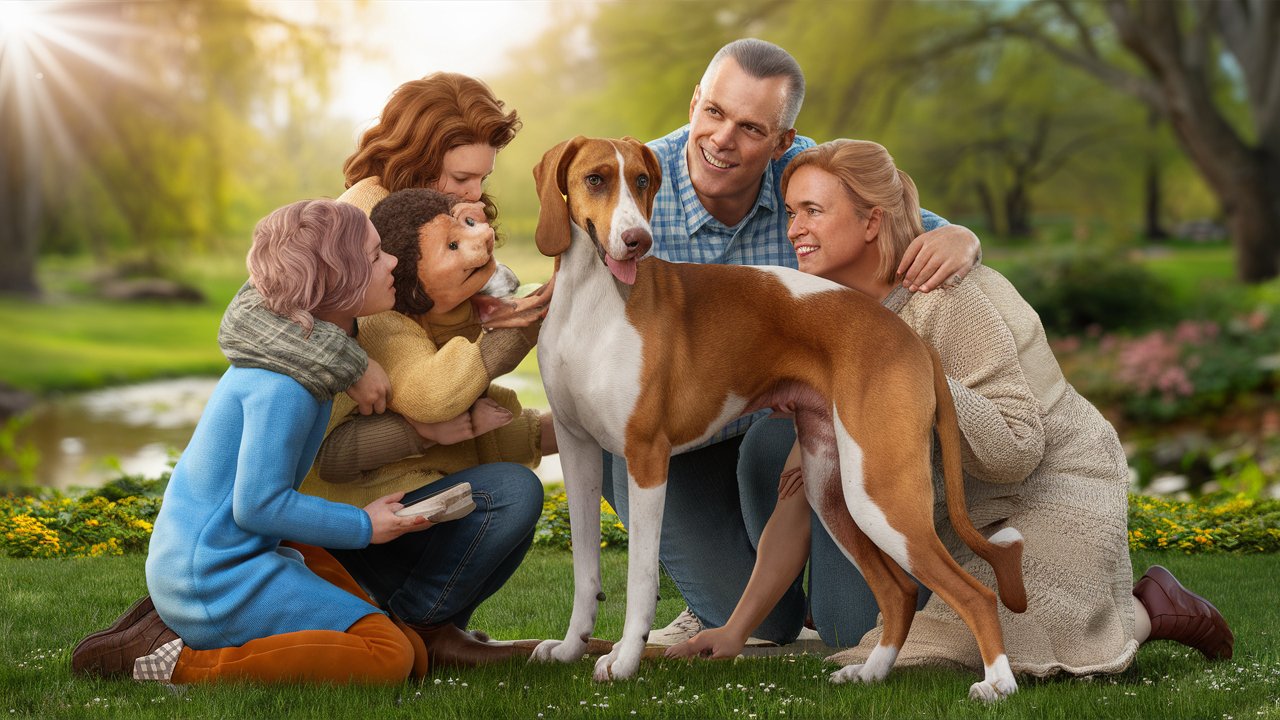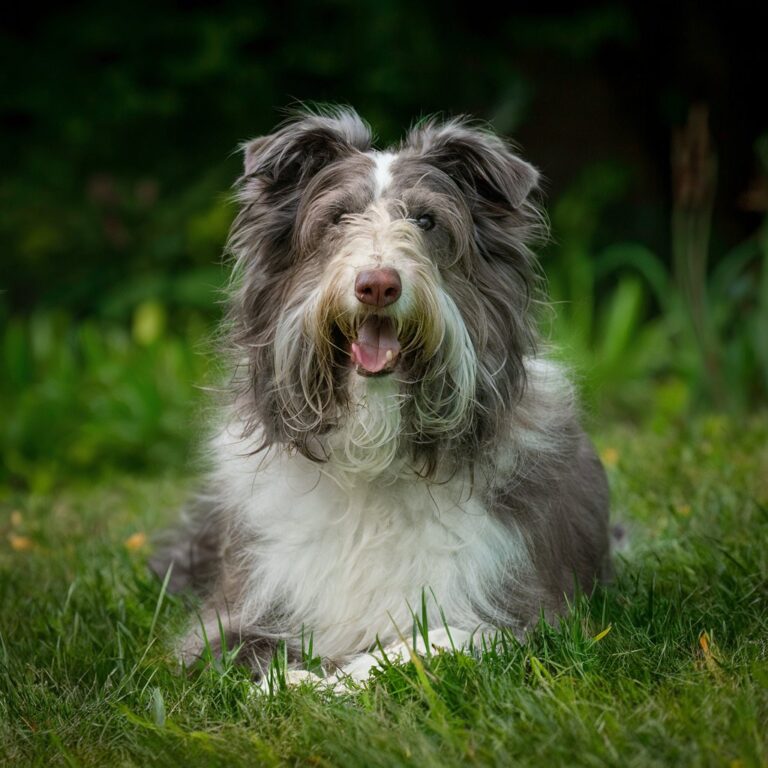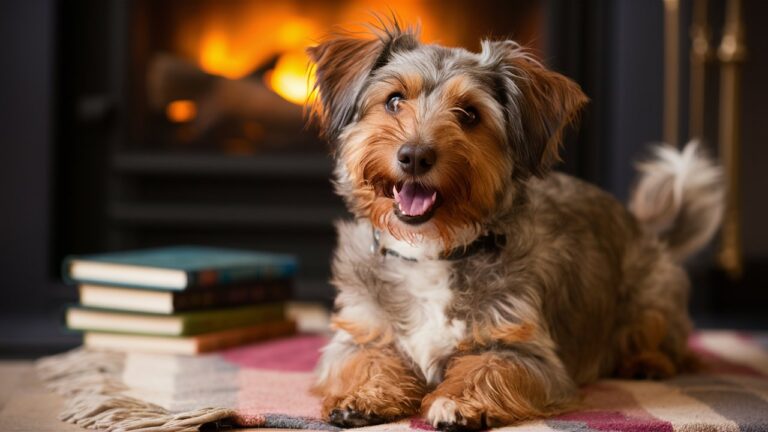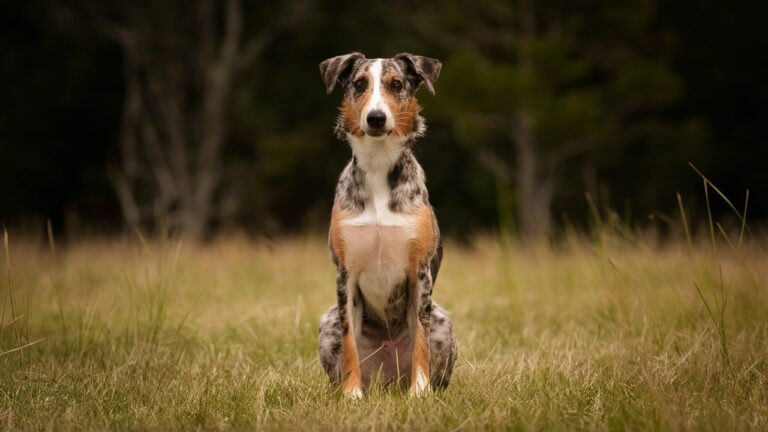English Foxhound 100%: Comprehensive Guide to an Elegant Breed
History and Origins
The English Foxhound’s story begins in medieval England, a time when hunting was not just a sport but a crucial skill for survival and prestige among the aristocracy. Packs of hounds were selectively bred for their ability to track and pursue foxes across challenging terrain. This selective breeding laid the foundation for what would eventually become known as the English Foxhound.
Influential Breeding Programs
By the 18th century, the development of the English Foxhound accelerated thanks to the dedication and expertise of English noblemen and huntsmen. These individuals sought to refine the breed’s characteristics, focusing on traits such as endurance, scenting ability, and temperament suitable for pack hunting. Records from this period detail meticulous breeding programs aimed at producing hounds that were not only efficient hunters but also resilient and trainable.
Role in Foxhunting Tradition
The English Foxhound’s primary purpose was foxhunting, a pursuit that involved mounted riders following a pack of hounds as they pursued foxes across countryside estates. This sport became deeply intertwined with English culture and aristocratic life, with organized hunts forming social events and opportunities for camaraderie among the elite.
Export and Influence
As British influence spread globally, so too did the English Foxhound. The breed’s reputation for endurance and adaptability led to its export to other countries, where it contributed to the development of local hound breeds and hunting traditions. In America, for example, English Foxhounds played a significant role in the establishment of organized foxhunting clubs and the refinement of American Foxhound breeds.
Preservation Efforts
Despite changes in hunting practices and societal shifts, efforts to preserve the purity and purpose of the English Foxhound continue today. Breed enthusiasts and organizations uphold standards that emphasize the breed’s historical traits and maintain its genetic diversity. These efforts ensure that future generations can appreciate and benefit from the English Foxhound’s unique heritage and capabilities.
Characteristics and Physical Traits
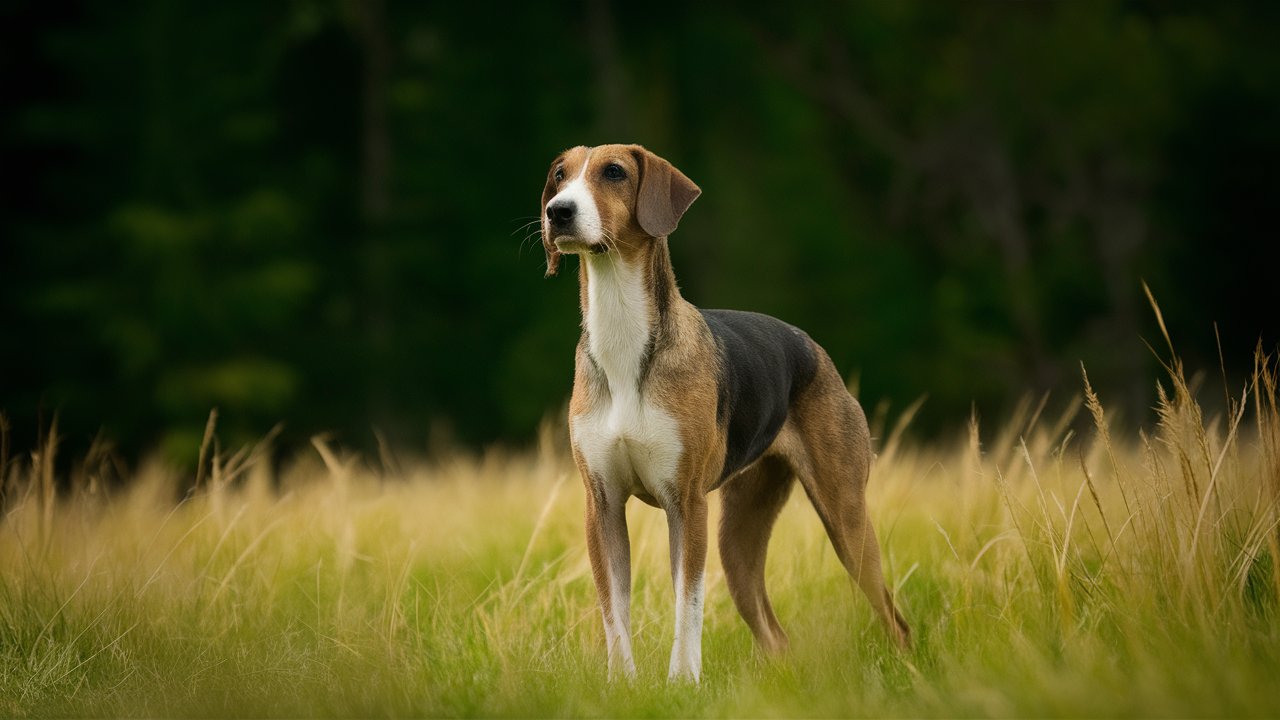
Characteristics and Physical Traits
Appearance: The English Foxhound is a breed renowned for its athletic build and graceful demeanor. Standing tall with a robust physique, these hounds exude strength and agility. Their head is noble and well-proportioned, with a distinctive hound expression that reflects their keen sense of smell and hunting lineage. The ears are long and set low, framing a face that often carries an expression of alertness and curiosity.
Coat and Colors: One of the defining features of the English Foxhound is its short and dense coat, which lies flat against the body. This coat serves as protection from the elements while requiring minimal grooming. The breed typically comes in traditional hound colors, with the most common being the tri-color pattern of black, white, and tan. Variations include bi-color combinations such as white and tan or black and tan, all of which contribute to the breed’s classic and elegant appearance.
Size and Proportions: English Foxhounds are medium to large dogs, with males typically standing between 22 to 25 inches at the shoulder and females slightly smaller. They are well-muscled and balanced, displaying a proportionate body structure that facilitates agility and endurance. Their chest is deep and provides ample lung capacity, essential for sustained periods of activity and pursuit.
Temperament: Beyond their physical attributes, English Foxhounds are beloved for their amiable temperament and sociable nature. They are known for being friendly, outgoing, and affectionate towards their families and other animals, making them excellent companions for households with children or multiple pets. Their inherent curiosity and love for exploration stem from their heritage as hunting dogs, where they would tirelessly track scents over vast terrain.
Energy Levels and Exercise Needs: As active dogs bred for endurance and stamina, English Foxhounds require regular exercise to maintain their physical and mental well-being. Long walks, jogging, or opportunities to engage in scent-oriented activities such as tracking games are essential to fulfill their exercise needs. Without adequate exercise, they may become restless or exhibit undesirable behaviors, highlighting the importance of providing them with outlets for their energy and instincts.
Intelligence and Trainability: English Foxhounds are intelligent dogs with a strong independent streak, stemming from their history as working hounds. While they possess a keen desire to please their owners, their independent nature can sometimes present challenges during training. Positive reinforcement techniques, consistency, and patience are key to harnessing their intelligence and channeling their natural abilities effectively.
Adaptability: Despite their outdoor origins, English Foxhounds adapt well to indoor living provided they receive sufficient exercise and mental stimulation. They thrive on human companionship and are happiest when included in family activities. Their adaptable nature makes them suitable for various living environments, from suburban homes to rural settings, as long as their exercise needs are met.
Health Considerations
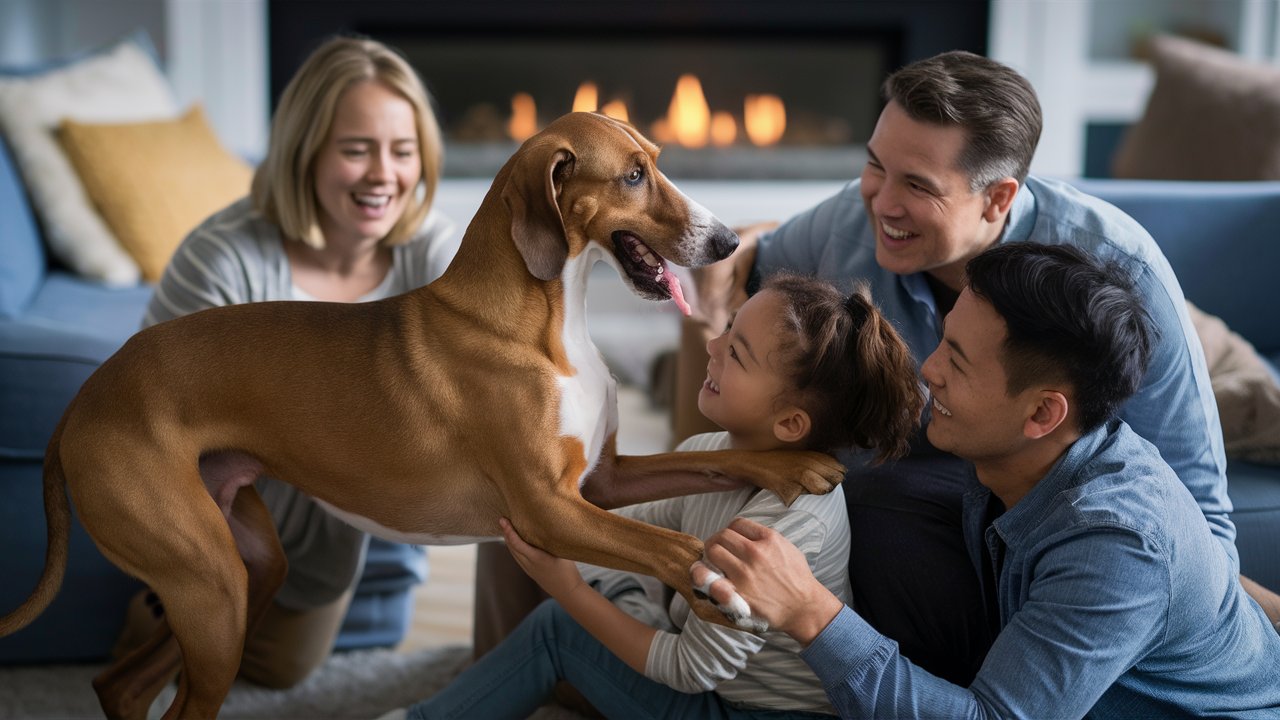
The English Foxhound is generally a healthy and robust breed, thanks to centuries of selective breeding for hunting prowess and physical endurance. However, like all breeds, they are prone to certain health conditions that prospective owners should be aware of to ensure their well-being and longevity.
Common Health Issues
- Hip Dysplasia: A hereditary condition where the hip joint doesn’t develop properly, leading to discomfort and reduced mobility. Regular exercise and maintaining a healthy weight can help mitigate this risk.
- Ear Infections: English Foxhounds, with their droopy ears, are prone to ear infections caused by trapped moisture and debris. Regular cleaning and inspection of the ears can prevent infections and discomfort.
- Bloat (Gastric Dilatation-Volvulus): This serious condition occurs when the stomach fills with air and twists on itself. It is more common in deep-chested breeds like the English Foxhound. Feeding them smaller meals throughout the day, rather than one large meal, and avoiding vigorous exercise right after eating can reduce the risk.
- Eye Issues: Some English Foxhounds may develop eye problems such as cataracts or progressive retinal atrophy (PRA). Regular eye exams by a veterinarian can help detect and manage these conditions early.
- Thyroid Disorders: Hypothyroidism, where the thyroid gland doesn’t produce enough hormones, can affect English Foxhounds. Symptoms include weight gain, lethargy, and skin issues. Treatment usually involves medication and regular monitoring.
- Heart Conditions: Dilated cardiomyopathy, a condition where the heart becomes enlarged and less efficient, can affect some English Foxhounds. Regular veterinary check-ups can help monitor heart health.
Preventative Care
To maintain optimal health, English Foxhounds require routine veterinary care, including vaccinations, parasite prevention, and dental care. Owners should also provide a balanced diet suitable for their age and activity level, ensuring they receive essential nutrients without overfeeding, which can contribute to obesity and related health issues.
Responsible Breeding Practices
Responsible breeders prioritize health screenings for breeding stock to reduce the incidence of genetic disorders. Potential puppy buyers should inquire about health clearances for conditions like hip dysplasia and eye disorders to ensure they are getting a puppy from a reputable source committed to breeding healthy dogs.
Living with an English Foxhound
Living with an English Foxhound is a rewarding experience, blending the breed’s rich history with their affable temperament and adaptable nature. Whether you’re considering adding one to your family or already have one bounding around your home, understanding their unique needs and quirks can enhance the joy they bring to your life.
Home Environment
English Foxhounds are renowned for their sociable nature and love for human companionship. They thrive in homes where they can be active participants in family life, enjoying interactions with adults, children, and even other pets. Their outgoing personality makes them excellent playmates for children, though their size and exuberance may require supervision with younger kids.
Despite their roots as outdoor hunting dogs, English Foxhounds easily transition to indoor living. They appreciate having access to a secure, fenced yard where they can explore and stretch their legs. However, they should not be left alone for extended periods, as they may become bored or develop separation anxiety.
Exercise Needs
Exercise is crucial for the well-being of an English Foxhound. These dogs are bred for endurance and have a natural instinct to track scents, so regular physical activity is essential to keep them mentally stimulated and physically fit. A daily routine that includes brisk walks, jogging, or opportunities to play fetch in a secure area helps satisfy their need for exercise and mental enrichment.
Engaging their keen sense of smell through activities like scent games or puzzle toys can provide additional mental stimulation. This not only prevents boredom but also channels their energy constructively, reducing the likelihood of destructive behaviors.
Training and Socialization
English Foxhounds are intelligent dogs with a strong independent streak, which can sometimes make training a challenge. They respond best to positive reinforcement techniques such as praise, treats, and consistency. Early socialization—exposing them to different people, animals, and environments—helps them develop into well-rounded adults.
Basic obedience training, including commands like sit, stay, and come, is important for safety and control, especially given their instinct to follow scents. Training sessions should be kept short and engaging to maintain their interest and prevent boredom.
Grooming Requirements
Maintaining a healthy coat and overall hygiene is relatively straightforward with an English Foxhound. Their short, dense coat benefits from regular brushing to remove loose hair and distribute natural oils. Bathing is only necessary as needed, such as after muddy adventures or if they develop a noticeable odor.
Other grooming tasks include regular teeth brushing to prevent dental issues, checking and cleaning ears to prevent infections, and trimming nails as needed. These routine care practices not only keep your Foxhound looking their best but also contribute to their overall health and comfort.
Health and Well-being
English Foxhounds are generally healthy dogs with a lifespan of around 10 to 13 years. However, like all breeds, they are prone to certain health conditions such as hip dysplasia, ear infections, and bloat. Regular veterinary check-ups, a balanced diet suitable for their activity level, and maintaining a healthy weight are key to preventing and managing these potential health issues.
Famous English Foxhounds in History
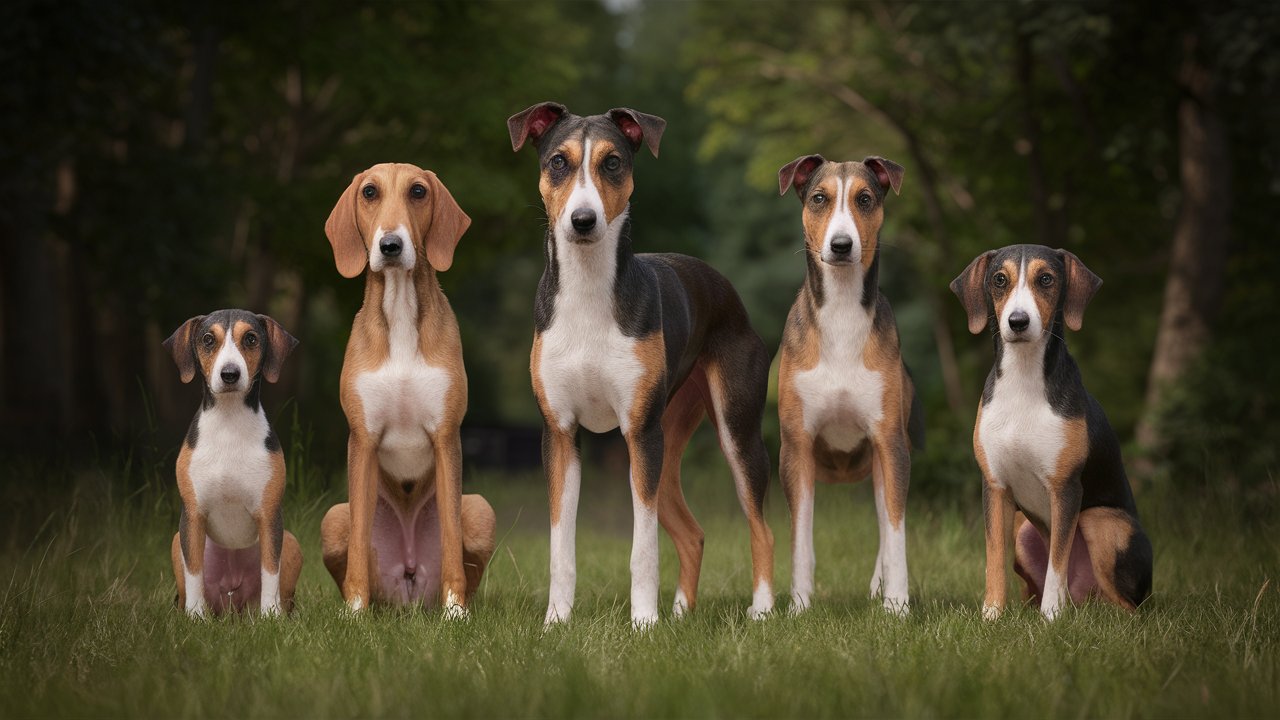
The English Foxhound has left an indelible mark on history, not only for its prowess in the hunting field but also for its presence in the lives of notable individuals and as a symbol of loyalty and companionship. Here, we explore some of the most famous English Foxhounds and their stories:
1. Boomerang
Boomerang achieved fame as the cherished companion of President George Washington. Gifted to Washington by the Marquis de Lafayette in 1785, Boomerang was noted for his intelligence, loyalty, and hunting abilities. He often accompanied Washington on rides and hunts, becoming a beloved fixture at Mount Vernon and a symbol of the president’s love for dogs.
2. Potter and Gimlet
These two English Foxhounds belonged to Queen Victoria, known for her deep affection for dogs. Potter and Gimlet were frequent companions during Queen Victoria’s reign in the 19th century, often seen accompanying her on carriage rides and walks around the royal estates. Their presence in royal portraits and personal anecdotes highlighted their importance in the Queen’s life and showcased the breed’s regal demeanor and loyalty.
3. Columbus
Columbus was a celebrated English Foxhound owned by John W. Daniel, a U.S. Senator from Virginia in the late 19th century. Known for his exceptional hunting skills and noble appearance, Columbus garnered attention for his participation in fox hunts across Virginia and beyond. His agility and keen scenting abilities made him a standout in hunting circles, contributing to the breed’s reputation as an exemplary hunting companion.
4. Moonbeam
Moonbeam gained fame as the loyal companion of Sir Winston Churchill, the renowned British statesman and Prime Minister during World War II. Known for his courage and determination, Churchill found solace and companionship in Moonbeam during some of the most challenging times in British history. Moonbeam’s steadfast loyalty and calm demeanor were cherished by Churchill and symbolized the resilience and strength embodied by the English Foxhound breed.
5. Rattler
Rattler was a notable English Foxhound owned by the Duke of Beaufort in the 19th century. Renowned for his exceptional hunting prowess and endurance, Rattler became a legendary figure in hunting circles. His ability to track and pursue foxes with unwavering determination earned him accolades and solidified the English Foxhound’s reputation as an unparalleled hunting companion.
Legacy and Impact
These famous English Foxhounds not only exemplified the breed’s physical attributes and hunting abilities but also demonstrated their profound impact on the lives of their owners and society at large. Through their loyalty, intelligence, and companionship, they left an enduring legacy that continues to celebrate the remarkable qualities of the English Foxhound breed.
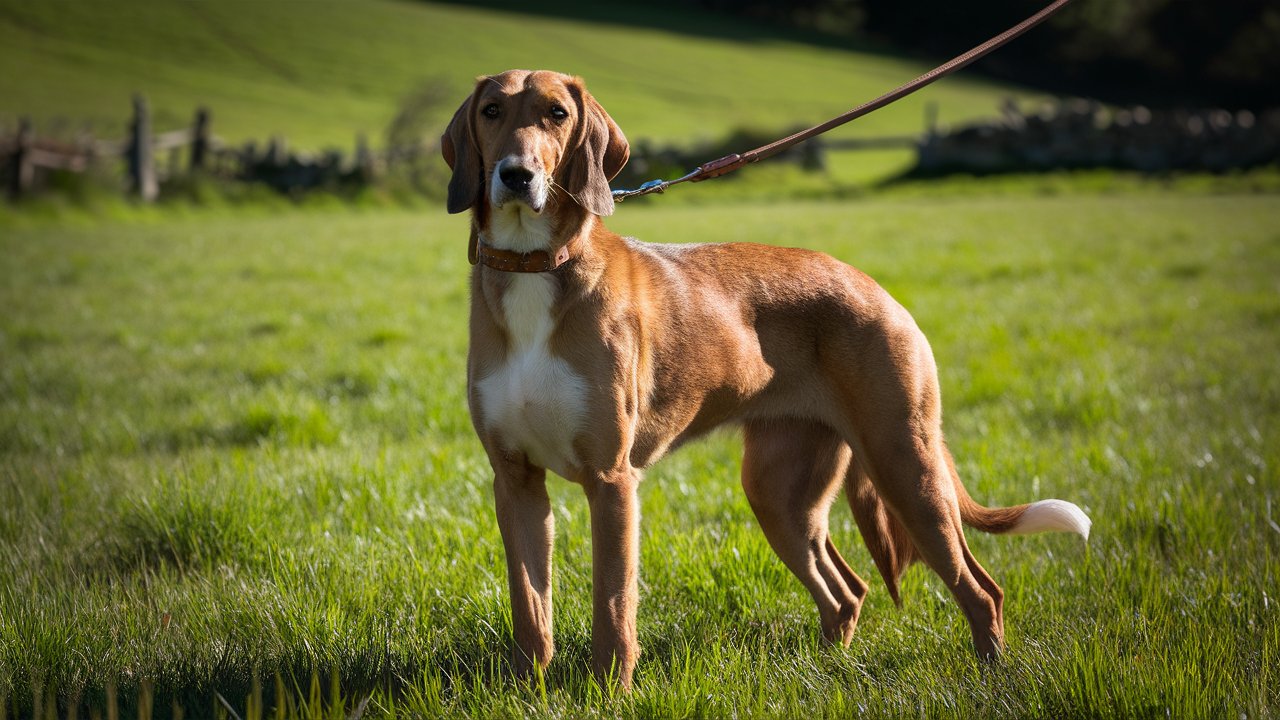
Conclusion
In conclusion, the English Foxhound stands as a paragon of canine excellence, blending centuries of selective breeding with a charming disposition that appeals to both hunters and families alike. From its origins in medieval England to its modern-day roles as a loyal companion and skilled working dog, the breed exemplifies versatility, intelligence, and unwavering loyalty.
By delving into the rich history and distinctive characteristics of the English Foxhound, we uncover a breed that embodies both grace and strength. Their athletic build and keen sense of smell make them formidable hunters, while their affectionate nature and sociable temperament ensure they thrive in the warmth of family settings.
For those considering an English Foxhound as a companion, understanding their need for exercise, mental stimulation, and companionship is key to fostering a fulfilling relationship. Whether embarking on outdoor adventures or enjoying quiet moments at home, their presence enriches lives with joy and companionship.
Personal anecdotes and stories from enthusiasts and owners underscore the breed’s enduring appeal and unique quirks, celebrating their role not just as pets, but as cherished members of the family. From famous foxhounds in history to everyday tales of devotion and loyalty, these narratives weave a tapestry of affection and admiration for the English Foxhound.
In essence, the English Foxhound continues to capture hearts around the world with its blend of athleticism, intelligence, and affection. Embracing their heritage and appreciating their role in our lives ensures that this remarkable breed will remain a beloved part of canine history for generations to come.
